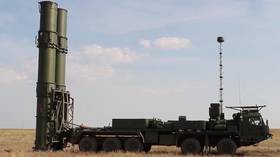“Soviet soldiers were not used to being in the woods” – WWII veteran
RT presents War Witness – a special project dedicated to the 65th anniversary of the Victory in the Second World War.
World War II veterans recount their stories about the war, its effects and its human perspective.
Antti Henttonen, who was a lieutenant of the Finnish border guard troops during the war with the Soviet Union, said that the Soviets were not ready to fight on foreign terrain in harsh conditions of the Finnish Winter.
“During the Winter War two Soviet divisions died in the Syväsalmi swamps. Soviet soldiers were not used to being in the woods. They were from Russia’s south, had summer uniforms on, they were afraid to go deep into the woods, whereas we were fighting in the woods. This is very sad, people were just being slaughtered. Finish soldiers on skis surrounded and killed them. They had no food, but had musical instruments with them. It was like they were going to a parade. But it didn’t help. In the winter the cold weather itself was to the advantage of the Finns, but it helped the Russians too. In subzero temperatures all lakes and swamps froze up. Soviet tanks could get to places where no one expected them,” Henttonen says.
“During World War II, one time there was a danger of a breakthrough at the front. Soviet tanks went on the ice again. In the night time the Finns would drill holes in the ice, by morning these holes would be covered by thin ice and snow. When one Soviet tank tried to get to the island, it broke through the ice and went under. The tank driver managed to get out, but their soldiers wounded him. He laid there on the ice calling Stalin and asking him for help. And then he died… The Finnish Army held up its defense for a long time, they made it to the point when Stalin sent troops to Berlin and World War II was over. So during both wars – the Winter War and World War – Helsinki was the only capital, besides Moscow and London-- that the enemy didn’t enter,” he adds.
Irina Skripacheva was a child during the Leningrad siege and her most vivid memory of that time are the air raid sirens: “The War began and so did the siege. Air raids were the most terrifying thing. The sound of sirens could tie my insides into a knot. It was horrible. If I was coming into a room and heard a siren I would run”.
“My mom knew, my great aunt Nastya had swapped her fur coat for a piece of pigskin without any fat or anything on it. And she made a jelly from it. My mother wrote a note and didn't say anything to me. She was confined to bed and told me to go to aunt Nastya. But I read the note on my way. It said "Aunt Nastya I have bloody diarhea, if you have anything give it to Ira". It was common knowledge around the city that bloody diarrhea meant the last stage – the person simply failed to survive. I arrived with the note and was given some jelly. I brought the glass back to my mother,” Skripacheva recalls.












